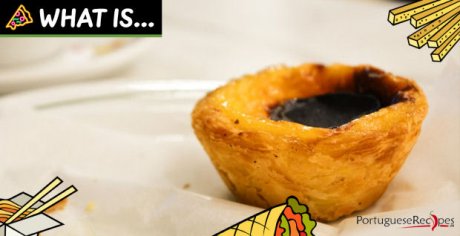All About Portuguese Custard Tarts
Pastel de nata (Portuguese pronunciation: pastéis de nata is a Portuguese egg custard tart pastry dusted with cinnamon. Outside Portugal, they are particularly popular in other parts of Western Europe, Asia and former Portuguese colonies, such as Brazil, Macau and East Timor. The Macanese pastel de nata was also adopted by KFC and is available in regions such as Hong Kong, Taiwan and China. In Indonesia, this pastry is especially popular in Kampung Tugu, Jakarta, a culturally Portuguese (Mardijker) enclave.
History
Pastéis de nata were created before the 18th century by Catholic monks at the Hieronymites Monastery (Portuguese: Mosteiro dos Jerónimos) in the civil parish of Saint Mary of Bethlehem, in Lisbon. At the time, convents and monasteries used large quantities of egg-whites for starching clothes, such as friars and nuns' religious habits. It was quite common for monasteries and convents to use the leftover egg yolks to make cakes and pastries, resulting in the proliferation of sweet pastry recipes throughout the country.
In the aftermath of the Liberal Revolution of 1820, following the dissolution of religious orders and in the face of the impending closure of many convents and monasteries, the monks started selling pastéis de nata at a nearby sugar refinery to bring in revenue. In 1834, the monastery was closed and the recipe sold to the sugar refinery, whose owners in 1837 opened the Fábrica de Pastéis de Belém. The descendants own the business to this day.
Since the opening of Fábrica de Pastéis de Belém, the original recipe of the pastel de nata is kept in a secret room. The recipe remains unchanged to this day and is known by only a few. The Fábrica de Pastéis de Belém, remains the most popular place to buy pastéis de nata around Lisbon. The shop is located just a short three-minute walk from the Jerónimos Monastery. The shop offers both take out and sit in services and sells over 20,000 pastéis de nata a day. Usually the tart is sprinkled with canela (cinnamon), and often accompanied with a bica, (a strong espresso coffee).
In 2009 The Guardian listed pastéis de Belém as one of the 50 "best things to eat" in the world and has over 50,000 reviews and ratings on Tripadvisor for its iconic pastéis de nata.
In 2011, following the result of a public vote. Pastel de Belem was announced one of Portugal’s Seven Wonders of Gastronomy. Cementing itself as one of the countries most popular national dishes.
